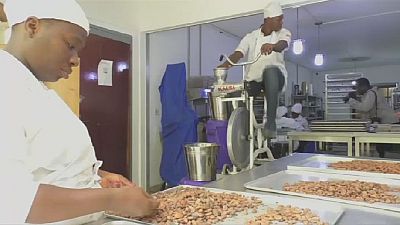I've bashed the US President more than a few times on this blog. But, to be fair to El Cheeto Grande, I must point out that he isn't the only one who's come up with a completely pointless tax on bicycles. Oregon imposed their own state tax a little less than two years ago; other jurisdictions either have done, or are considering, something similar.
Of course, in the US, about three generations of adults didn't cycle. So, we are just starting to understand that the bicycle is a viable means of transportation as well as enjoyable means of recreation and exercise rather than just a kid's toy.
On the other hand, Europeans still see the bicycle as I've described it. In some countries, masses of people never traded two wheels for four; in others (or in parts of some countries), the auto-centric culture hasn't persisted as long as it's had its grip on America. Thus, to people to ride again, and safely, Europeans can tap into memory, if you will, that hasn't gone dormant or extinct.
Such is the case in Belgium. That country has more bicycle-related events, from races to randonees to rallies, and more talented cyclists, per capita than just about any other nation. I haven't spent a lot of time there, but it's easy to see that bicycles and velocipedic culture are never very far from Belgians' consciousness.
That might be the reason why some law makers over there understand that the way to build useful and sensible infrastructure, preserve a country's bicycle industries and, well, encourage people to ride, is not to impose more taxes on bikes, whether at the retail level or when they enter the country from someplace else.
At least, that's the impression I have after the Belgian parliament voted through a bill to impose a lower sales tax for bicycles and e-bikes than the current Value Added Tax levied there and in other European Union nations. If approved by the European Commission, the surcharge for bicycles and e-bikes would be lowered from the standard VAT of 21 percent to 6 percent.
Belgian politician Laurent Devin has been championing such a measure for some time. Other political leaders agree, including Ahmed Laaouej, agree. He leads the Belgian Socialist Party, which happens to be the second-largest party in Belgium's parliament.
While some EU member states have been able to reduce the VAT on bicycle repairs, no other country has attempted such a widespread reduction on the taxes levied on two-wheelers. In 2017, 445,000 bicycles were sold in the country, of which 218,000 were e-bikes--in a country of 11.35 million people. On a per capita basis, that is roughly the same number of bikes sold in the US, but Belgians, like other Europeans, tend to keep and ride their bikes longer than Americans, so fewer are first-time bike buyers than in the US.
Of course, in the US, about three generations of adults didn't cycle. So, we are just starting to understand that the bicycle is a viable means of transportation as well as enjoyable means of recreation and exercise rather than just a kid's toy.
On the other hand, Europeans still see the bicycle as I've described it. In some countries, masses of people never traded two wheels for four; in others (or in parts of some countries), the auto-centric culture hasn't persisted as long as it's had its grip on America. Thus, to people to ride again, and safely, Europeans can tap into memory, if you will, that hasn't gone dormant or extinct.
Such is the case in Belgium. That country has more bicycle-related events, from races to randonees to rallies, and more talented cyclists, per capita than just about any other nation. I haven't spent a lot of time there, but it's easy to see that bicycles and velocipedic culture are never very far from Belgians' consciousness.
That might be the reason why some law makers over there understand that the way to build useful and sensible infrastructure, preserve a country's bicycle industries and, well, encourage people to ride, is not to impose more taxes on bikes, whether at the retail level or when they enter the country from someplace else.
 |
| Bicycles parked by medieval houses in Ghent, Belgium |
At least, that's the impression I have after the Belgian parliament voted through a bill to impose a lower sales tax for bicycles and e-bikes than the current Value Added Tax levied there and in other European Union nations. If approved by the European Commission, the surcharge for bicycles and e-bikes would be lowered from the standard VAT of 21 percent to 6 percent.
Belgian politician Laurent Devin has been championing such a measure for some time. Other political leaders agree, including Ahmed Laaouej, agree. He leads the Belgian Socialist Party, which happens to be the second-largest party in Belgium's parliament.
While some EU member states have been able to reduce the VAT on bicycle repairs, no other country has attempted such a widespread reduction on the taxes levied on two-wheelers. In 2017, 445,000 bicycles were sold in the country, of which 218,000 were e-bikes--in a country of 11.35 million people. On a per capita basis, that is roughly the same number of bikes sold in the US, but Belgians, like other Europeans, tend to keep and ride their bikes longer than Americans, so fewer are first-time bike buyers than in the US.



















